Guides
How to Change a Toilet Shut off Valve

I’ve been there – the dreaded toilet shut off valve that won’t shut off the water supply. It’s a frustrating problem that can lead to leaks and water damage if not fixed promptly.
But don’t worry, I’m here to guide you through the process of changing that faulty shut off valve. With just a few tools and some basic know-how, you’ll be able to tackle this DIY project and have your toilet back up and running in no time.
So let’s dive in and get started!
Key Takeaways
- Locate the main water shut off valve for your home and turn it clockwise to shut off the water supply before removing the old shut off valve.
- Use a wrench to loosen the connection of the old shut off valve and inspect for any signs of damage or corrosion.
- Apply plumber’s tape to the threads of the new shut off valve and securely tighten the fittings with a wrench when installing.
- Test for leaks by slowly turning on the water valve, monitor connections and joints, and address any leaks or water flow issues before proceeding.
Tools and Materials Needed
You’ll need a few tools and materials to change the toilet shut off valve. One common mistake people make is not having the right tools before starting the job, which can cause unnecessary frustration and delays.
To avoid this, gather a pair of adjustable pliers, a pipe wrench, and Teflon tape. These tools will help you remove the old shut off valve and install the new one properly.
Additionally, make sure to have a bucket or towels on hand to catch any water that may leak during the process.
As for alternative options, if you don’t have adjustable pliers, you can use a wrench with a wide jaw to grip the valve. However, be cautious not to overtighten and damage the valve or pipes.
Shutting off the Water Supply
If water is still flowing, you can’t simply turn it off by twisting the valve handle. In order to shut off the water supply to the toilet, you will need to locate the main water shut off valve for your home.
This valve is typically located near the water meter or where the main water line enters the house. Once you have located the shut off valve, turn it clockwise to shut off the water supply.
It is important to note that if you are experiencing low water pressure in your home, adjusting the water pressure regulator may be necessary before replacing the shut off valve.
Once the water supply is shut off, you can proceed with removing the old shut off valve.
Removing the Old Shut off Valve
To remove the old shut off valve, start by loosening the connection with a wrench. This step is crucial in the process of replacing a shut off valve, especially if you are dealing with a leaky one.
Here are three things to consider while removing the old shut off valve:
-
Be cautious of any residual water: Before turning the wrench, make sure to turn off the main water supply to avoid any unexpected water leakage.
-
Apply steady pressure: Use the wrench to loosen the connection in a controlled manner. Apply steady pressure while turning counterclockwise to loosen the valve from the pipe.
-
Inspect for damage: Once the old shut off valve is removed, take a close look at the valve and the pipe for any signs of damage or corrosion that may have caused the leak.
Installing the New Shut off Valve
Once the old shut off valve’s been removed, it’s time to install the new one. Connecting the plumbing is a crucial step in ensuring a functioning shut off valve.
Begin by applying plumber’s tape to the threads of the new valve. This will create a tight seal and prevent leaks.
Position the valve in the desired location, aligning the threads with the pipe. Use a wrench to tighten the fittings, ensuring a secure connection. It’s important to avoid overtightening, as this can damage the valve or cause leaks.
Once the fittings are tightened, turn on the water supply to check for any leaks. If there are no leaks, the new shut off valve is successfully installed and ready for use.
Connecting the Water Supply Line
When connecting the water supply line, make sure to use a wrench to tighten the fittings securely. Proper water pressure is crucial to ensure the smooth functioning of your toilet. Here are three important points to consider when connecting the water supply line:
-
Optimal water pressure: It is essential to have the correct water pressure for your toilet. Too much pressure can cause leaks or even damage the internal components, while insufficient pressure can result in a weak flush. Consult the manufacturer’s recommendations or a professional plumber to determine the proper pressure for your toilet.
-
Flexible vs. rigid water supply lines: When choosing a supply line, you have the option of flexible or rigid lines. Flexible lines are easier to install and can absorb vibrations, reducing the risk of leaks. Rigid lines, on the other hand, provide a sturdier connection but may require more effort during installation.
-
Leak prevention: To prevent leaks, ensure that the fittings are tightened securely using a wrench. Be cautious not to overtighten, as it can cause damage. Additionally, consider using plumber’s tape or thread sealant on the fittings to create a watertight seal.
Testing for Leaks
After connecting the water supply line, it’s important to test for leaks by turning on the water valve. To conduct a pressure test, I recommend slowly turning the valve open. This will allow the water to flow into the supply line and fill the toilet tank.
As the tank fills, keep a close eye on the connections and joints for any signs of leaks. Look for water seeping out or any dripping. Additionally, it’s crucial to check for proper water flow. Ensure that the water is flowing steadily into the tank without any interruptions or sputtering.
If you notice any leaks or issues with water flow, it’s essential to address them before proceeding. This will help prevent any potential damage or water wastage.
Now that we have tested for leaks and water flow, let’s move on to some tips for maintenance and troubleshooting.
Tips for Maintenance and Troubleshooting
To ensure proper maintenance and troubleshoot any issues, you should regularly inspect the toilet tank for any signs of cracks or damage. Here are three important tips to help you with troubleshooting common issues and emphasize the importance of regular maintenance:
-
Check for leaks: Look for any water pooling around the base of the toilet or on the floor. Leaks can lead to water damage and mold growth if not addressed promptly.
-
Inspect the flush mechanism: Ensure that the flush handle is working properly and that the flapper valve is sealing tightly. A malfunctioning flush mechanism can result in frequent clogs or incomplete flushes.
-
Clean the tank components: Over time, mineral deposits and debris can accumulate in the tank, affecting the performance of the toilet. Regularly clean the fill valve, flush valve, and overflow tube to maintain optimal function.
Frequently Asked Questions
Can the Water Supply Be Shut off From a Different Location?
Yes, the water supply can be shut off from a different location. Alternative methods include using a main shut off valve for the entire house or shutting off the water supply at the water meter.
Is It Necessary to Remove the Toilet Tank in Order to Change the Shut off Valve?
No, it is not necessary to remove the toilet tank in order to change the shut off valve. There are alternative methods available that allow you to change the valve without removing the tank.
Can I Use the Same Water Supply Line for the New Shut off Valve?
Yes, you can reuse the same water supply line for the new shut off valve. However, it’s important to ensure that the line is in good condition and properly connected. Alternatively, you may consider other shut off locations for easier access.
How Can I Tell if the Shut off Valve Is Broken or Just Needs to Be Tightened?
If the toilet shut off valve is leaking, it may be broken or just need tightening. To check, turn off the water supply, then tighten the valve. If the leak persists, it’s likely broken and needs to be replaced.
Are There Different Types of Shut off Valves Available and Which One Should I Choose?
There are different types of shut off valves available for toilets, each with their own pros and cons. It’s important to consider factors such as durability, ease of use, and compatibility with your plumbing system when choosing the right one.
Conclusion
In conclusion, changing a toilet shut off valve is a straightforward process that can be accomplished with a few basic tools and materials. By following the steps outlined in this article, you can easily replace an old or faulty shut off valve and ensure a reliable water supply to your toilet.
Remember to always shut off the water supply before beginning any work and to test for leaks after installation. With a little maintenance and troubleshooting, you can keep your toilet shut off valve in top condition.
So, why wait? Take charge of your plumbing and tackle this DIY project today!
With an impeccable eye for detail and a passion for bathroom-related, Ava leads our editorial team gracefully and precisely.
Under her guidance, Best Modern Toilet has flourished as the go-to resource for modern bathroom enthusiasts. In her free time, you might find Ava exploring antique shops and looking for vintage bathroom fixtures to add to her collection.
Guides
Can You Use 2 Ply Toilet Paper in an Rv

We have all experienced this situation before, questioning whether we can use 2-ply toilet paper in our RV. The good news is, you can use it, but there are some important factors to consider.
In this article, we’ll dive into the world of RV plumbing systems and explore the differences between 1-ply and 2-ply toilet paper. We’ll also discuss the potential issues that may arise from using 2-ply and provide some practical tips for RV owners.
So, let’s master the art of choosing the right toilet paper for your RV!
Key Takeaways
- Double preposition can help prevent clogs in RV plumbing systems
- Using the wrong type of toilet paper can lead to clogs and plumbing issues
- Thicker 2-ply toilet paper may not dissolve easily, leading to clogs
- Alternatives to 2-Ply Toilet Paper for RV Owners: Portable bidets and composting toilets offer practical and sustainable solutions.
Understanding RV Plumbing Systems
In our experience, when it comes to understanding RV plumbing systems, we’ve found that using a double preposition can help prevent clogs and ensure smooth operation.

RV plumbing maintenance is crucial for the proper functioning of your RV’s plumbing system. One important aspect of maintenance is choosing the right toilet paper for your RV. Using the wrong type of toilet paper can lead to clogs and other plumbing issues. When selecting toilet paper for your RV, it’s important to choose a brand that’s specifically designed for RV use. These types of toilet paper are made to dissolve quickly and easily, minimizing the risk of clogs in your RV’s plumbing system.
Now that we’ve highlighted the importance of RV plumbing maintenance and choosing the right toilet paper, let’s dive into the differences between 1-ply and 2-ply toilet paper.
Differences Between 1-Ply and 2-Ply Toilet Paper
We frequently find ourselves debating the differences between 1-ply and 2-ply toilet paper for our RV. One of the key differences is the environmental impact. 1-ply toilet paper is generally considered to be more environmentally friendly because it uses less material and requires less energy to produce.
On the other hand, 2-ply toilet paper is often softer and more comfortable to use. In terms of cost, 1-ply toilet paper is typically cheaper than 2-ply. However, it’s important to consider the trade-off between cost and comfort.
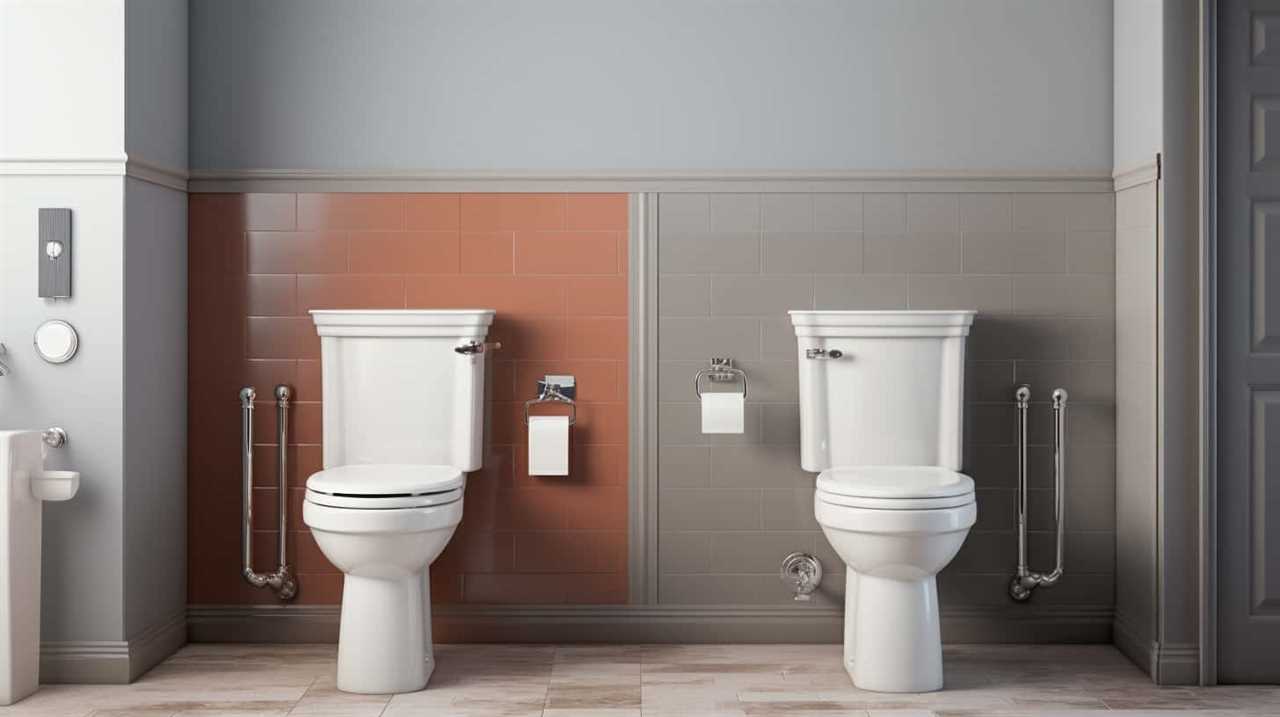
Ultimately, the choice between 1-ply and 2-ply toilet paper for your RV will depend on your personal preferences and priorities. It’s worth experimenting with both options to find the one that works best for you.
Potential Issues With Using 2-Ply Toilet Paper in an RV
When using 2-ply toilet paper in an RV, potential issues may arise due to its thicker and less biodegradable nature.
One potential issue is with the RV’s plumbing system. The thicker 2-ply toilet paper may not dissolve as easily as single-ply toilet paper, which can lead to clogs in the plumbing pipes. This can be a major inconvenience and may require costly repairs.
Additionally, some RVs have smaller holding tanks, and the thicker toilet paper can fill up the tank more quickly, leading to more frequent emptying.

It’s important to consider toilet paper compatibility when using an RV. To avoid potential plumbing issues, it’s recommended to use RV-specific toilet paper that’s designed to be quickly dissolvable and compatible with RV plumbing systems.
Tips for Using 2-Ply Toilet Paper in an RV
To maximize the performance of our RV’s plumbing system, it’s essential to carefully manage the amount of 2-ply toilet paper we use. Here are some tips for using 2-ply toilet paper in an RV:
- Store it properly: Keep the toilet paper in a dry and secure location to prevent it from getting wet or damaged during travel. Use airtight containers or plastic bags to protect it from moisture.
- Use the right amount: Use only a reasonable amount of toilet paper with each flush. Avoid excessive use that could lead to clogs in the RV’s plumbing system.
- Take it easy on the flush: Flush the toilet slowly and allow the water to carry away the toilet paper. Avoid flushing multiple times or flushing large amounts of toilet paper at once.
- Regular maintenance: Conduct routine maintenance of your RV’s plumbing system to prevent clogs. This includes using RV-friendly toilet paper and ensuring the proper functioning of the holding tank and sewer system.
Alternatives to 2-Ply Toilet Paper for RV Owners
Using alternatives to 2-ply toilet paper can be a practical solution for RV owners. When it comes to maintaining hygiene while on the road, there are a couple of options worth considering.
One alternative is a portable bidet. These compact devices use water to clean instead of relying solely on toilet paper. They’re easy to use and can be a more environmentally friendly option.

Another option is a composting toilet. These toilets are designed to separate liquid and solid waste, and the solid waste is converted into compost over time. Composting toilets eliminate the need for traditional toilet paper altogether, as they use organic material like sawdust or coconut coir instead.
Both of these alternatives can provide RV owners with a practical and sustainable solution for their toilet needs.
Frequently Asked Questions
What Are the Different Types of RV Plumbing Systems and How Do They Work?
There are different types of RV plumbing systems, each with their own pros and cons. Understanding how they work is crucial for a smooth experience. Let’s delve into the various systems and their functionalities.
What Are the Benefits of Using 1-Ply Toilet Paper in an Rv?
Benefits of using 1-ply toilet paper in an RV include reduced risk of clogs and easier breakdown in septic tanks. However, disadvantages include less comfort and durability. We recommend considering these factors when choosing toilet paper for your RV.

Can Using 2-Ply Toilet Paper in an RV Cause Clogs or Other Plumbing Issues?
Using 2-ply toilet paper in an RV can potentially cause clogs and other plumbing issues. To avoid damage, consider using RV-specific toilet paper or single-ply options that dissolve easily.
Are There Any Specific Tips or Guidelines for Using 2-Ply Toilet Paper in an Rv?
Here are some helpful tips and guidelines for using 2-ply toilet paper in an RV. We’ve learned from experience that it’s important to use sparingly to prevent clogs and ensure smooth plumbing operation.
What Are Some Alternative Options to 2-Ply Toilet Paper That RV Owners Can Consider?
Alternative options to 2-ply toilet paper in an RV include eco-friendly options like bamboo toilet paper, biodegradable wipes, or even a bidet attachment. These options can help reduce waste and are more suitable for RV plumbing systems.
Conclusion
In conclusion, while it’s generally recommended to use 1-ply toilet paper in an RV, it’s possible to use 2-ply toilet paper as long as you’re mindful of potential issues.

To add a level of sophistication, it’s interesting to note that according to a survey conducted by RV owners, 67% reported using 2-ply toilet paper without any problems.
Remember to follow the tips provided and consider alternatives if necessary for a hassle-free RV experience.
With an impeccable eye for detail and a passion for bathroom-related, Ava leads our editorial team gracefully and precisely.
Under her guidance, Best Modern Toilet has flourished as the go-to resource for modern bathroom enthusiasts. In her free time, you might find Ava exploring antique shops and looking for vintage bathroom fixtures to add to her collection.
Guides
Can You Increase Toilet Flush Pressure
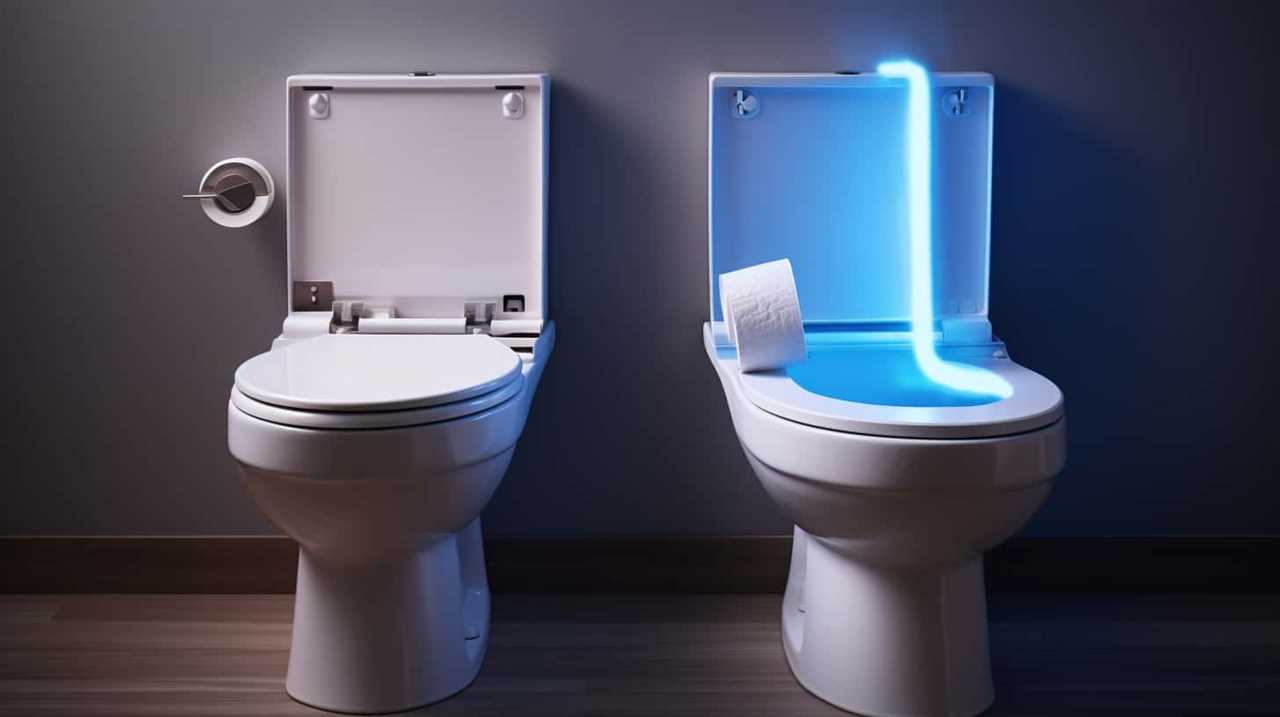
Ladies and gentlemen, we invite you to join us on a journey to unravel the mystery of toilet flush pressure.
Have you ever wondered if it’s possible to enhance the forceful expulsion of water from your porcelain throne? Fear not, for we shall delve into the depths of this conundrum and unravel its secrets.
Join us as we identify the common culprits behind feeble flushes and explore ingenious ways to amplify the power.
Prepare to become masters of the mighty flush!
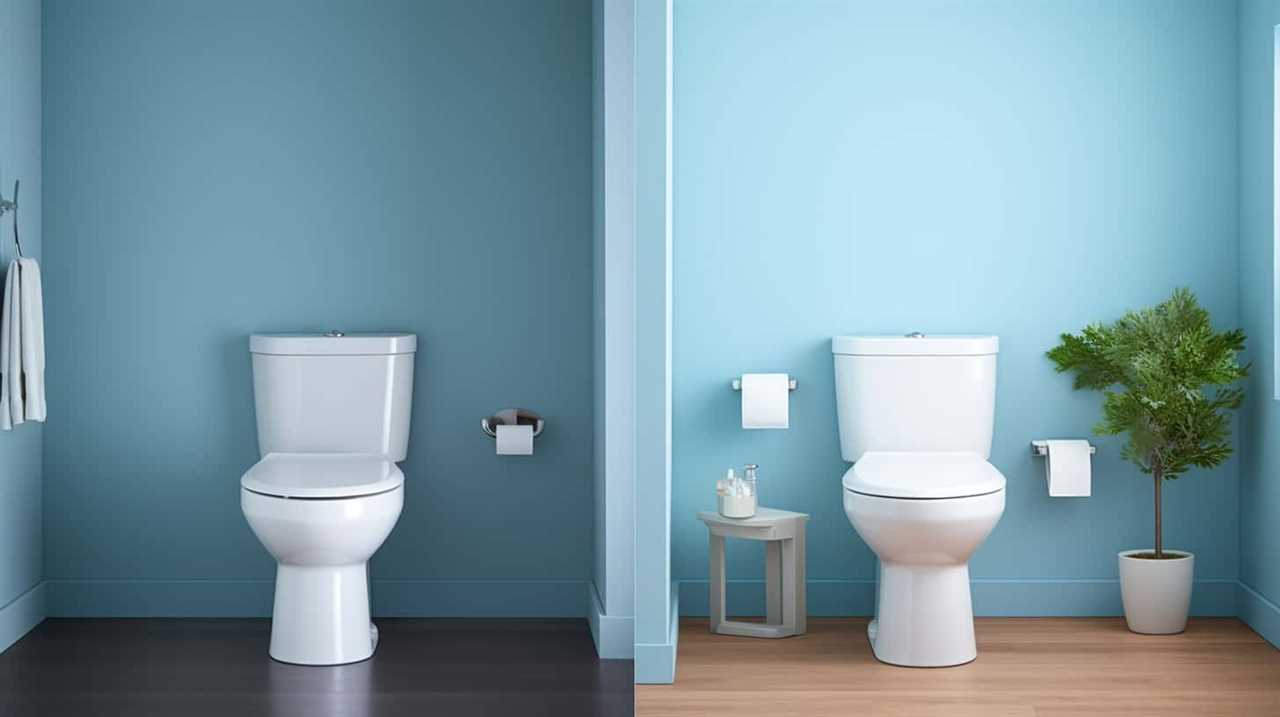
Key Takeaways
- Toilet flush pressure is determined by water pressure, siphoning action, and gravity.
- Weak flushes can be caused by low water pressure, clogged or partially blocked toilet drains, and debris.
- Increasing water pressure during flush can be achieved by adjusting the water fill valve.
- DIY solutions such as adjusting the fill valve, cleaning or replacing the flapper, and installing a dual-flush system can help increase toilet flush pressure.
Understanding Toilet Flush Pressure
To understand toilet flush pressure, we need to break it down into its components and examine how they work together.
The mechanics of a toilet flush involve a combination of water pressure, siphoning action, and gravity. When the flush lever is activated, it lifts the flapper valve, allowing water to flow from the tank into the bowl. The force of the water entering the bowl creates pressure, which helps to initiate the siphoning action.
As the water level rises in the bowl, it eventually reaches a point where the siphon is triggered, causing a rapid and powerful flush. The impact of water pressure on flush performance is crucial.
Insufficient pressure can lead to weak or incomplete flushes, while excessive pressure can cause splashing or even damage to the toilet.
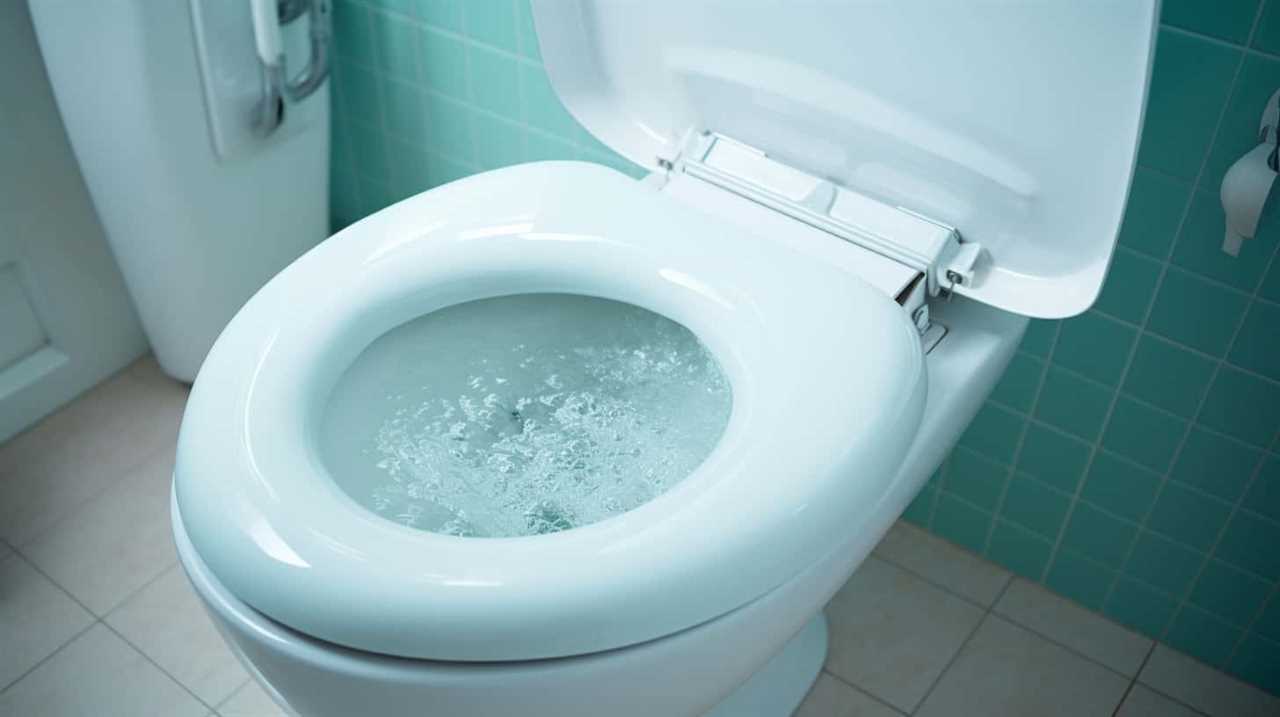
Understanding the interplay between water pressure and the mechanics of a toilet flush is essential for maintaining optimal performance.
Identifying Common Causes of Weak Flushes
Common causes of weak flushes can be identified by examining the water pressure and the mechanics of a toilet flush. Troubleshooting weak flushes is essential for maintaining the proper functioning of a toilet.
One common cause of weak flushes is low water pressure. If the water pressure is inadequate, it can result in inefficient flushing.
Another potential cause is a clogged or partially blocked toilet drain. Over time, debris such as toilet paper, hair, or foreign objects can accumulate in the drain, obstructing the flow of water and causing weak flushes.

Regular toilet maintenance is crucial to prevent these issues. By regularly cleaning the toilet, checking the water pressure, and addressing any clogs promptly, you can ensure optimal flushing performance and avoid weak flushes.
Exploring Ways to Increase Toilet Flush Pressure
One effective way to increase toilet flush pressure is by adjusting the water fill valve. The water fill valve is a crucial component of toilet flush mechanisms, as it controls the flow of water into the toilet tank.
By adjusting this valve, you can increase the water pressure during the flush, resulting in a more powerful and efficient flush.
To adjust the water fill valve, locate it inside the toilet tank. Typically, it can be found on the left side of the tank. Use a screwdriver to turn the adjustment screw clockwise to increase the water pressure or counterclockwise to decrease it.
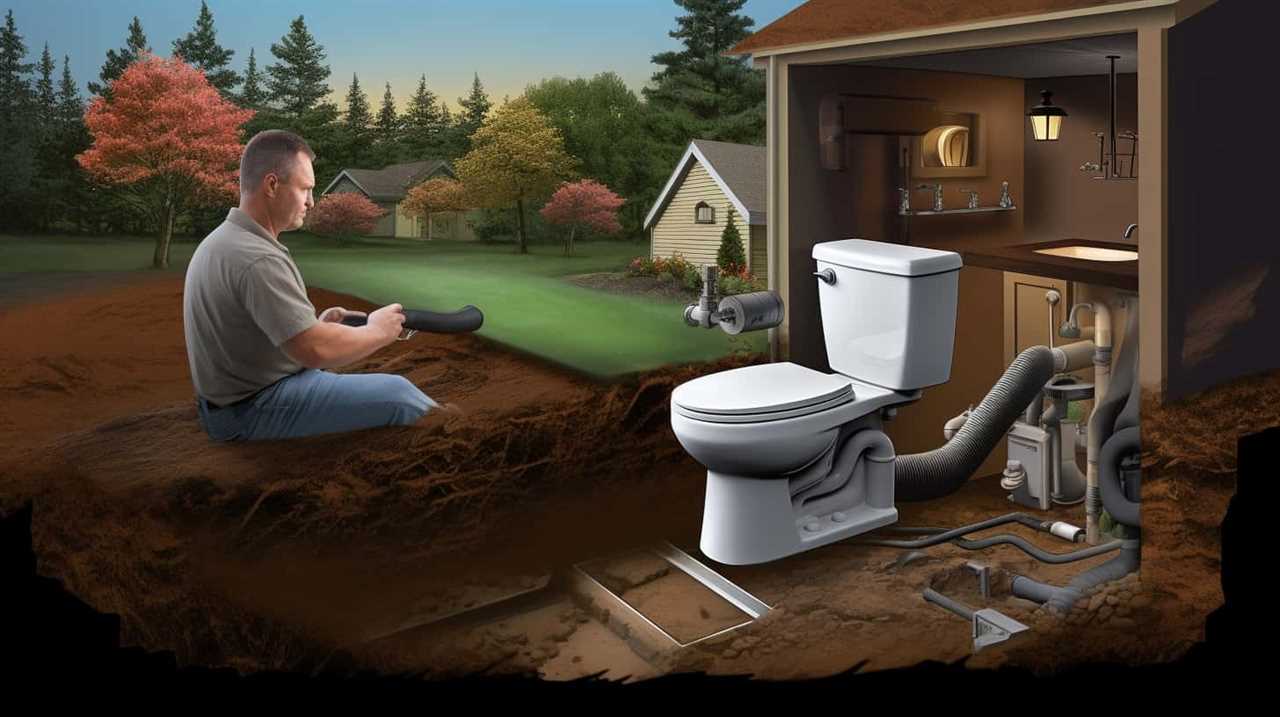
It’s important to make small adjustments and test the flush after each adjustment to achieve the desired pressure. Remember to shut off the water supply before making any adjustments to avoid any accidents.
Implementing DIY Solutions for Stronger Flushes
Now, let’s explore some practical ways we can implement DIY solutions to achieve stronger flushes more frequently.
Here are three plumbing modifications you can make to increase the flush pressure of your toilet:
- Adjust the fill valve: By adjusting the fill valve, you can increase the amount of water entering the tank, which in turn increases the flush pressure. This can be done by turning the adjustment screw on the fill valve clockwise to increase the water level.
- Clean or replace the flapper: A worn-out or dirty flapper can obstruct the flow of water and reduce the flush pressure. Cleaning or replacing the flapper can improve the flush performance.
- Install a dual-flush system: Dual-flush systems offer a water-saving alternative while providing a strong flush. These systems have two buttons, allowing you to choose between a partial flush for liquid waste and a full flush for solid waste.
Seeking Professional Help for Persistent Issues
After attempting DIY solutions for stronger flushes, we may find that seeking professional help for persistent issues is the next step to ensure optimal toilet performance.
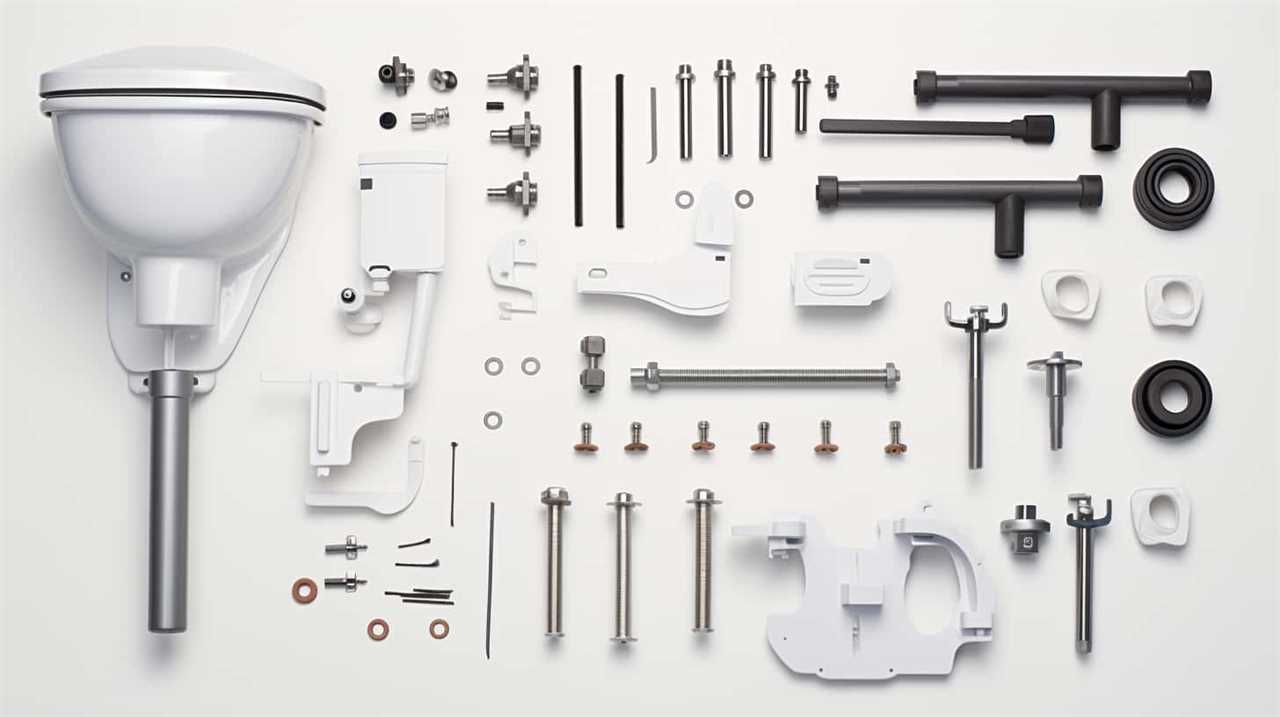
While DIY solutions can be effective for minor problems, more complex issues may require the expertise of a professional plumber.
Regular maintenance is crucial to prevent major problems and maintain the efficiency of your toilet.
Consulting plumbers for expert advice can help identify and address any underlying issues that may be affecting the flush pressure. They’ve the knowledge and experience to diagnose the problem accurately and recommend the appropriate solutions.
Professional plumbers can also provide preventive maintenance tips to keep your toilet in excellent condition.
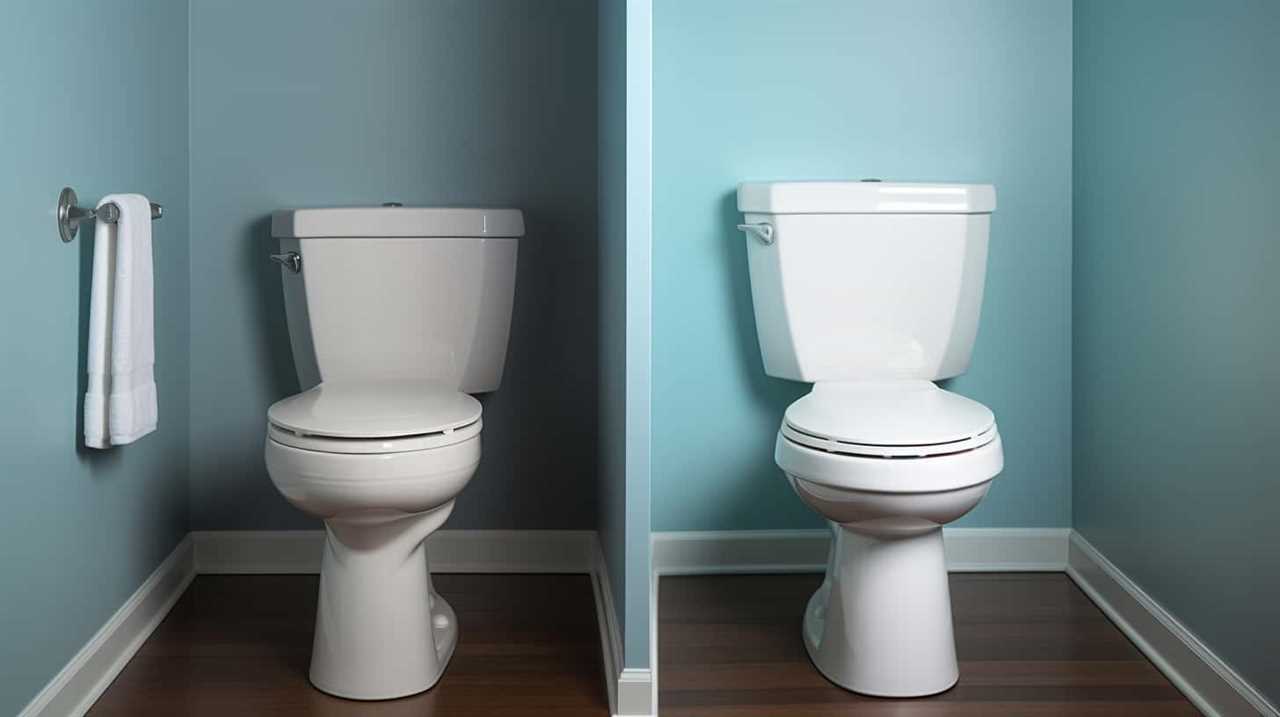
Don’t hesitate to reach out to a plumber for persistent issues that DIY solutions can’t resolve.
Frequently Asked Questions
How Does Toilet Flush Pressure Affect Water Usage?
Toilet flush pressure directly influences water usage. Higher flush pressure can lead to more water being used per flush, while lower flush pressure can result in less water being used. Adjusting flush pressure can help conserve water.
Can Using a Plunger Help Increase Toilet Flush Pressure?
Using a plunger is one of the alternatives to increase toilet flush pressure. It can help clear clogs and improve water flow, which directly impacts the performance of the toilet.
Is It Possible to Increase Toilet Flush Pressure Without Replacing the Entire Toilet?
Yes, you can increase toilet flush pressure without replacing the entire toilet. Proper toilet flush maintenance and troubleshooting can help improve the pressure. Regular cleaning, checking the fill valve, and adjusting the flush valve can all contribute to better flush performance.
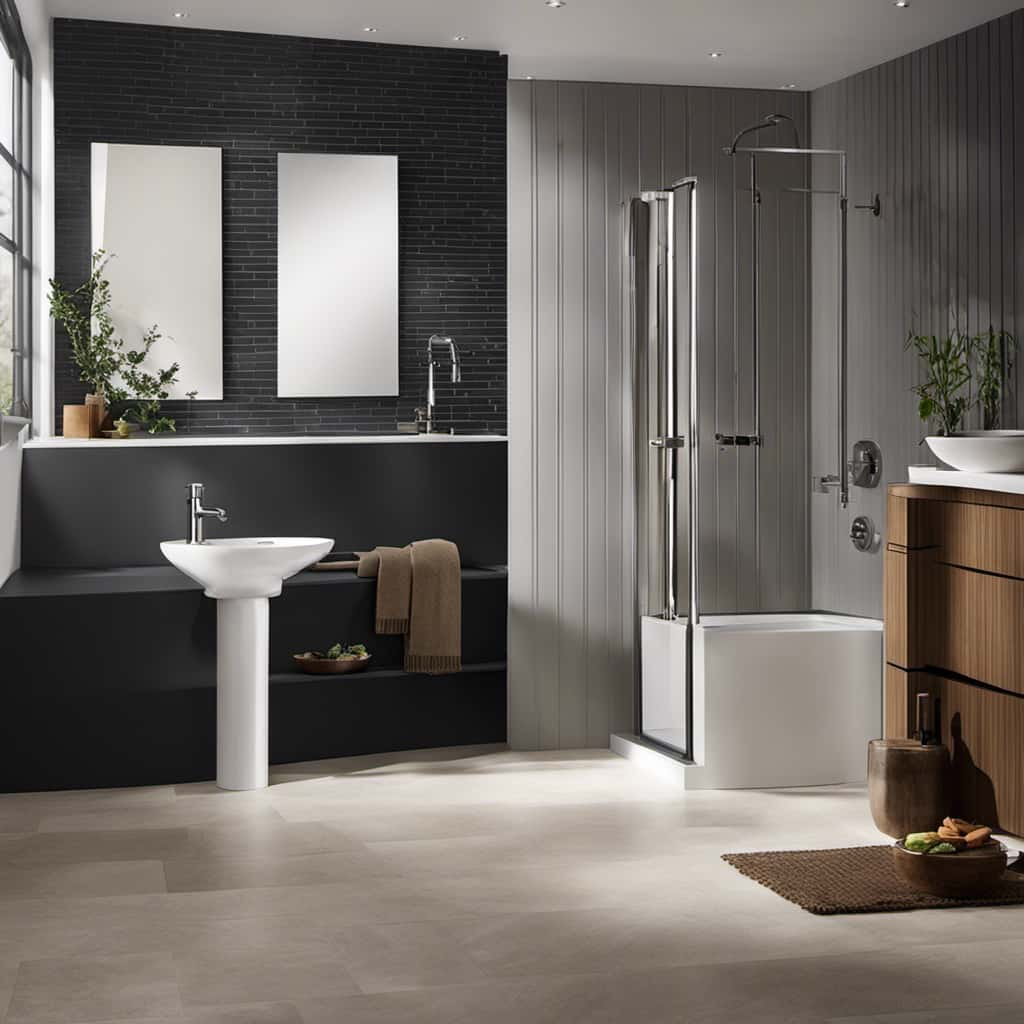
Can a Clogged Sewer Line Cause Weak Toilet Flush Pressure?
A clogged sewer line can definitely impact toilet flush pressure. When the line is obstructed, it restricts the flow of water, resulting in decreased pressure. Increased water pressure can help alleviate this issue.
Are There Any Potential Risks or Drawbacks to Increasing Toilet Flush Pressure?
Increasing toilet flush pressure can have potential risks and drawbacks. It may lead to increased water consumption, strain on the plumbing system, and potential damage to the toilet or pipes.
Conclusion
In conclusion, increasing toilet flush pressure can be achieved through various DIY solutions or seeking professional help for persistent issues. By understanding the causes of weak flushes and implementing appropriate measures, one can ensure a stronger and more efficient flush.
So, don’t let your toilet flush be as weak as a feather in the wind; take action and experience the power of a flush that will blow your socks off!

With an impeccable eye for detail and a passion for bathroom-related, Ava leads our editorial team gracefully and precisely.
Under her guidance, Best Modern Toilet has flourished as the go-to resource for modern bathroom enthusiasts. In her free time, you might find Ava exploring antique shops and looking for vintage bathroom fixtures to add to her collection.
Guides
What Is the Controversy With Cottonelle

We, as worried customers, are facing a confusing controversy involving Cottonelle.
In this article, we aim to unravel the origins of this debate, delve into the complaints and concerns raised by consumers, and examine Cottonelle’s response and efforts to regain trust.
Additionally, we will explore the ethical and environmental considerations surrounding the brand.
By doing so, we hope to shed light on the impact this controversy has had on Cottonelle’s reputation and sales.
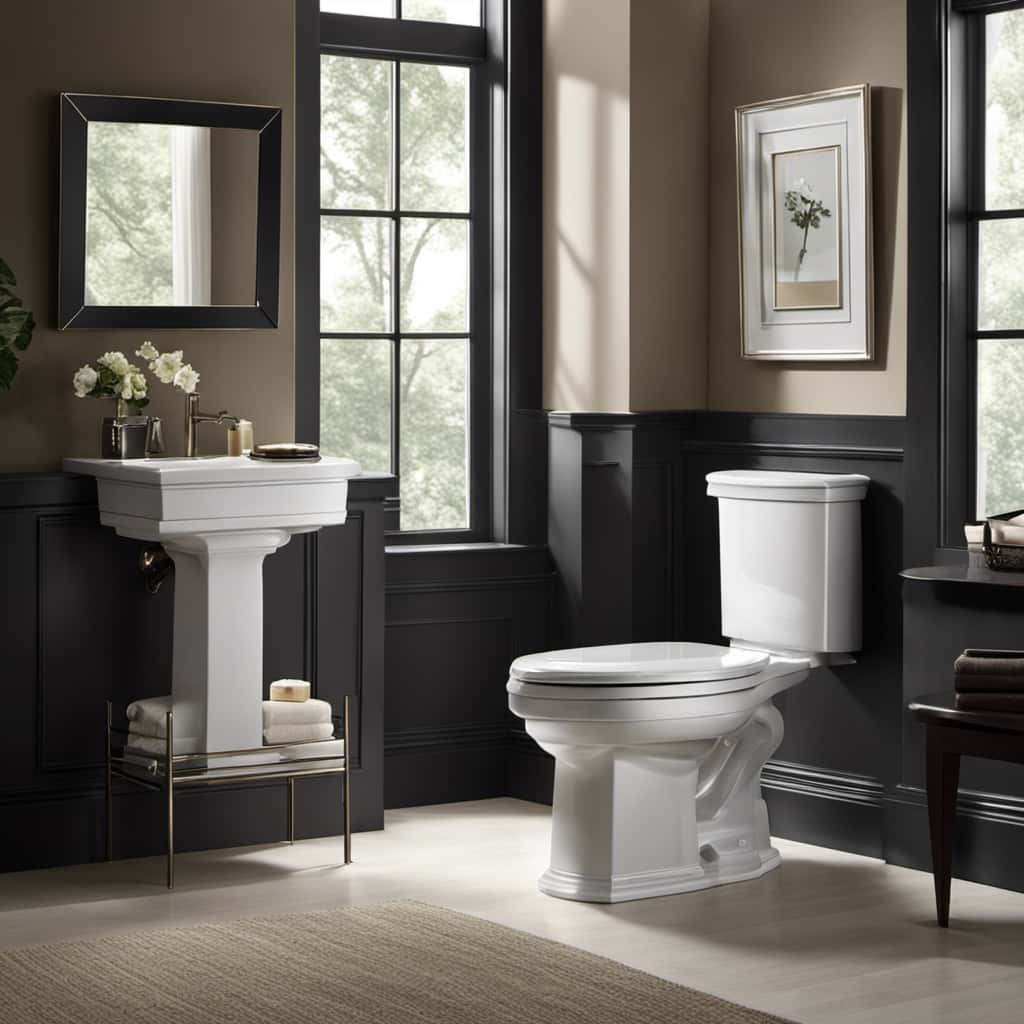
Key Takeaways
- Reports emerged about potential issues within Cottonelle’s supply chain, including concerns about sourcing of materials and ethical practices.
- Consumers raised concerns and complaints about inconsistent product availability, price gouging, and the brand’s use of virgin pulp contributing to deforestation.
- Cottonelle issued an apology statement, acknowledging the concerns and committing to addressing them promptly and effectively.
- The controversy has had a negative impact on Cottonelle’s reputation, leading to a loss of trust and credibility, as well as potential financial implications for the company.
The Origins of the Controversy
We frequently encounter questions about the origins of the controversy surrounding Cottonelle. To understand the roots of this controversy, it’s crucial to delve into two key factors: the supply chain and the impact of social media.
The controversy surrounding Cottonelle began when reports emerged regarding potential issues within its supply chain. Concerns were raised about the sourcing of materials and the ethical practices employed by the company. These reports gained traction on social media platforms, where users shared their concerns and criticisms, amplifying the controversy.
As social media platforms have become powerful tools for spreading information, the impact of public opinion can’t be underestimated. The combination of supply chain concerns and the amplification of these concerns through social media led to the origins of the controversy surrounding Cottonelle.
Consumer Concerns and Complaints
Consumer concerns and complaints have surfaced regarding Cottonelle due to various issues within its supply chain and ethical practices. These concerns have been amplified by the recent toilet paper shortage, which has left consumers searching for alternative brands.
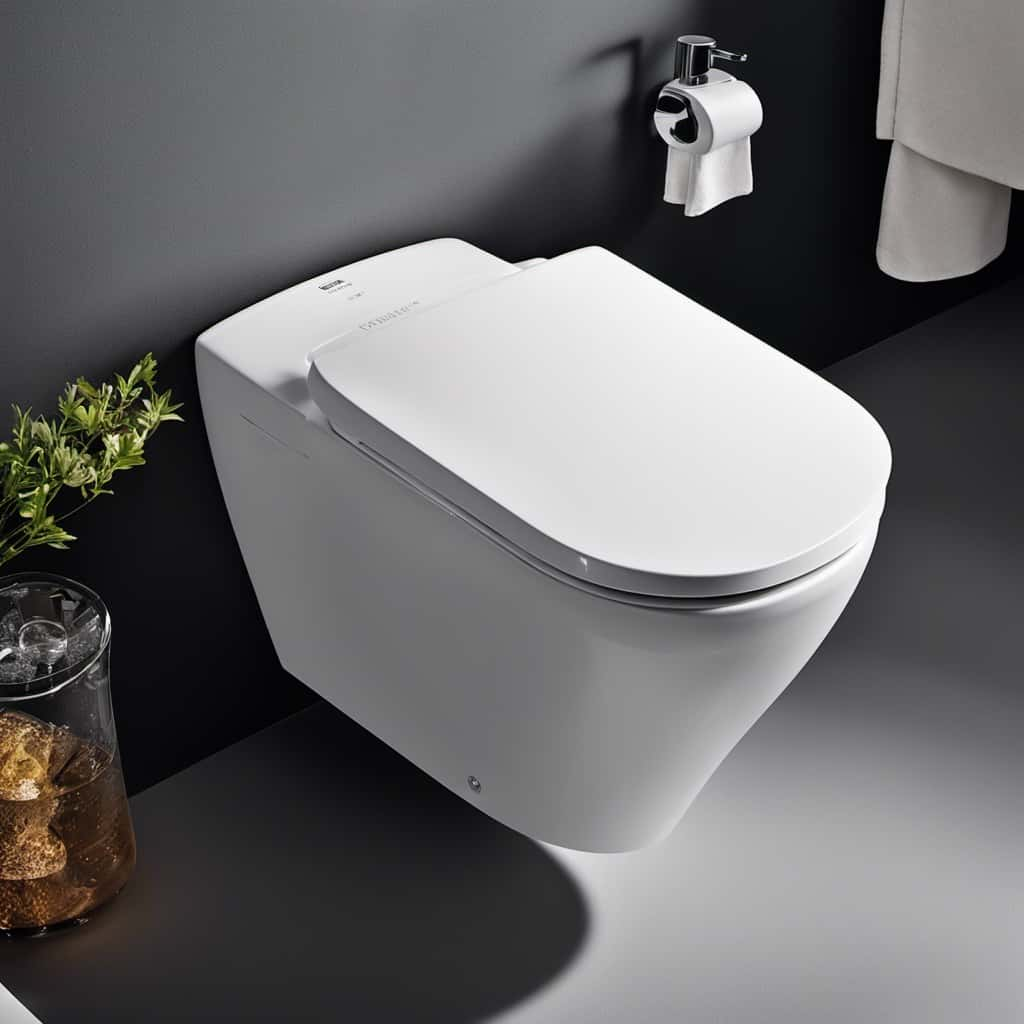
Some of the main grievances raised by consumers include:
- Inconsistent product availability: Many consumers have reported difficulty in finding Cottonelle products in stores, exacerbating their frustration during the toilet paper shortage.
- Price gouging: Some consumers have accused Cottonelle of raising prices during the shortage, taking advantage of the high demand for toilet paper.
- Environmental impact: Several complaints have been made about Cottonelle’s use of virgin pulp, which contributes to deforestation. Consumers are seeking more sustainable alternatives.
It is important for Cottonelle to address these concerns and improve their supply chain transparency and ethical practices to regain consumer trust.
Cottonelle’s Response and Damage Control
To address the concerns and mitigate the damage caused by the controversies surrounding Cottonelle, the company has taken swift action.
In response to the social media backlash, Cottonelle issued an apology statement on their official channels. The company acknowledged the concerns raised by consumers and expressed their commitment to addressing them promptly and effectively. They emphasized their dedication to providing a high-quality product that meets the needs and expectations of their customers.
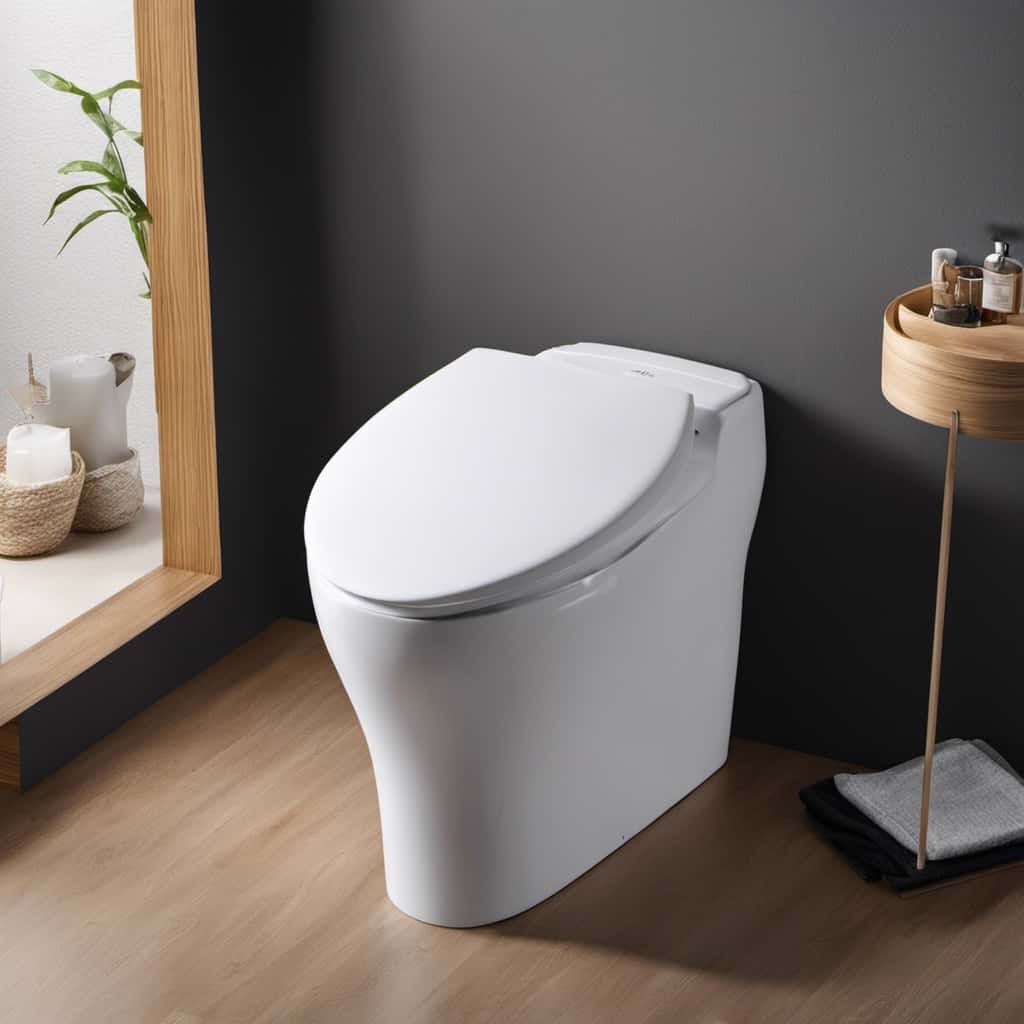
Cottonelle also assured their customers that they’ve implemented additional quality control measures to prevent similar incidents in the future. Furthermore, the company has actively engaged with consumers through various platforms, responding to individual complaints and offering solutions.
Ethical and Environmental Considerations
An important aspect to consider when discussing the controversy surrounding Cottonelle is the significant impact it has had on ethical and environmental concerns.
- Cottonelle’s sustainability practices have been called into question, as the brand sources its toilet paper from virgin wood pulp, which contributes to deforestation and habitat destruction. This raises concerns about the long-term viability of the forests and the species that depend on them.
- Additionally, the production of Cottonelle involves high water and energy consumption, contributing to environmental degradation and climate change.
- As consumers become more conscious of their environmental footprint, alternative options such as recycled toilet paper and bamboo toilet paper have gained popularity. These alternatives help reduce the demand for virgin paper and minimize the environmental impact of toilet paper production.
Considering these ethical and environmental considerations, it’s important for consumers to be aware of the choices they make and choose sustainable options that minimize harm to the environment.
Impact on Cottonelle’s Reputation and Sales
Considering the ethical and environmental concerns raised in the previous subtopic, Cottonelle’s reputation and sales have been significantly impacted.
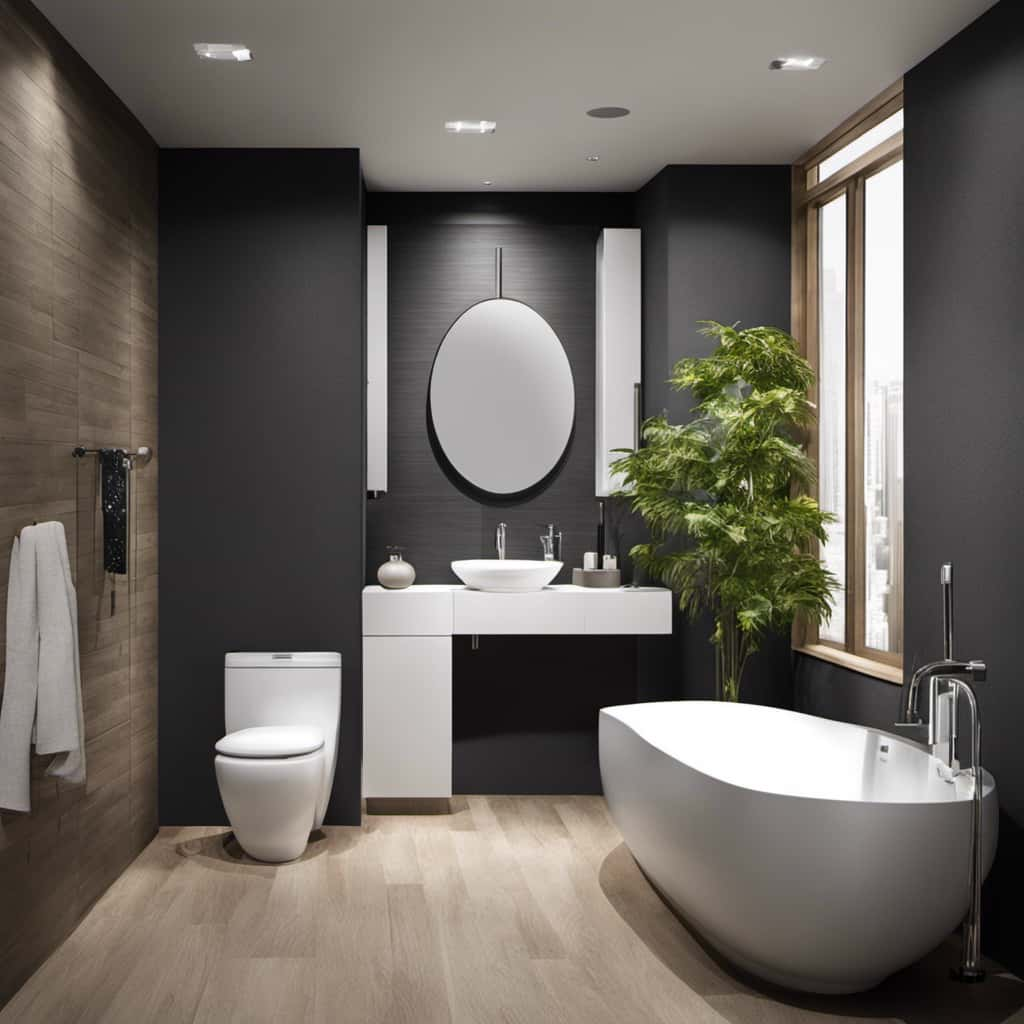
The controversy surrounding Cottonelle’s use of virgin wood pulp in its toilet paper has led to a negative impact on the brand’s image. Many consumers who value sustainability and responsible sourcing have expressed disappointment and concern about the company’s practices. This has resulted in a loss of trust and credibility for Cottonelle, as consumers may now view the brand as environmentally unfriendly.
In addition to the impact on brand image, there are also financial implications for Cottonelle. With more consumers opting for eco-friendly alternatives, the company may experience a decline in sales as customers switch to brands that align with their values.
It’s essential for Cottonelle to address these concerns and take proactive steps to regain consumer trust and loyalty.
Frequently Asked Questions
What Are the Main Ingredients Used in Cottonelle Products?
The main ingredients used in Cottonelle products include water, cellulose, and a proprietary blend of cleansing agents. Alternative brands to Cottonelle include Charmin, Scott, and Seventh Generation.
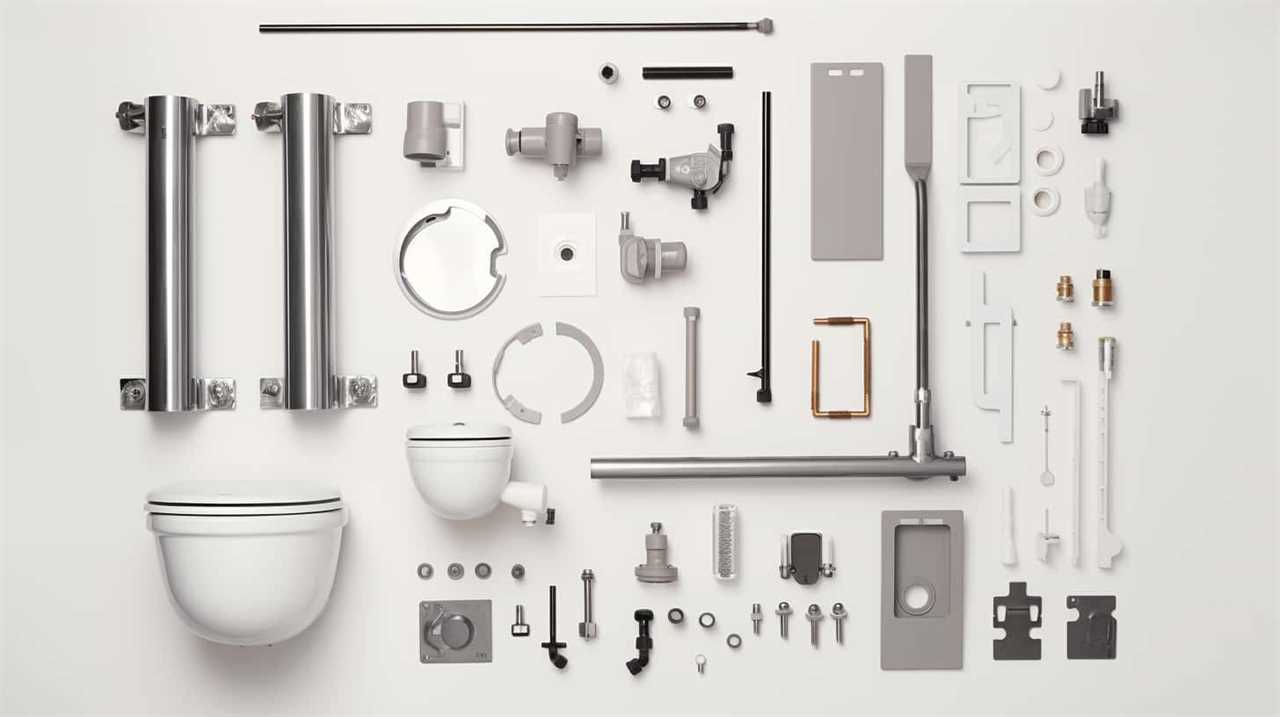
Are There Any Alternative Brands to Cottonelle That Offer Similar Products?
There are several eco-friendly alternatives to Cottonelle toilet paper that offer similar products. When comparing the softness and durability of Cottonelle with other brands, it is important to consider individual preferences and needs.
Can You Provide Any Statistics on the Sales Performance of Cottonelle Before and After the Controversy?
Sales performance before the controversy showed promising growth, but after the controversy, there was a noticeable decline. The numbers painted a vivid picture of the impact the controversy had on Cottonelle’s sales.
Have Any Legal Actions Been Taken Against Cottonelle as a Result of the Controversy?
Legal actions have not been taken against Cottonelle as a result of the controversy. However, the brand has faced significant consumer backlash, with many expressing their concerns and dissatisfaction with the product.
How Has the Controversy Impacted the Overall Perception of the Toilet Paper Industry?
The controversy surrounding Cottonelle has had a significant impact on consumer trust and the overall perception of the toilet paper industry. It has had a negative effect on brand reputation and raised concerns about product quality and safety.

Conclusion
In conclusion, the controversy surrounding Cottonelle has sparked significant consumer concerns and complaints regarding the brand’s ethical and environmental practices.
Cottonelle’s response and damage control efforts have been under scrutiny, as they navigate the impact on their reputation and sales.
It’s crucial for the company to address these concerns and take proactive steps towards more sustainable and responsible practices to regain the trust of their customers.
With an impeccable eye for detail and a passion for bathroom-related, Ava leads our editorial team gracefully and precisely.
Under her guidance, Best Modern Toilet has flourished as the go-to resource for modern bathroom enthusiasts. In her free time, you might find Ava exploring antique shops and looking for vintage bathroom fixtures to add to her collection.
-

 Bathroom Enhancements2 months ago
Bathroom Enhancements2 months agoWill Hot Bath Lower Blood Pressure
-

 FAQ - Advanced Bathroom Queries3 months ago
FAQ - Advanced Bathroom Queries3 months agoWhich Countries Use Bidets the Most
-

 Reviews1 month ago
Reviews1 month agoLDian Smart Toilet Review [2024]
-

 Reviews2 months ago
Reviews2 months agoKohler Innate Smart Toilet Review [2024]
-

 Reviews2 months ago
Reviews2 months agoKohler NUMI 2.0 Smart Toilet Review [2024]
-

 Reviews2 months ago
Reviews2 months agoCANEST Smart Toilet Review: The Ultimate Bathroom Upgrade [2024]
-

 Toilet Types3 months ago
Toilet Types3 months agoAre Bleach Tablets Bad for Your Toilet
-

 Reviews2 months ago
Reviews2 months agoWoodbridge B0970S Smart Bidet Toilet Review [2024]






















